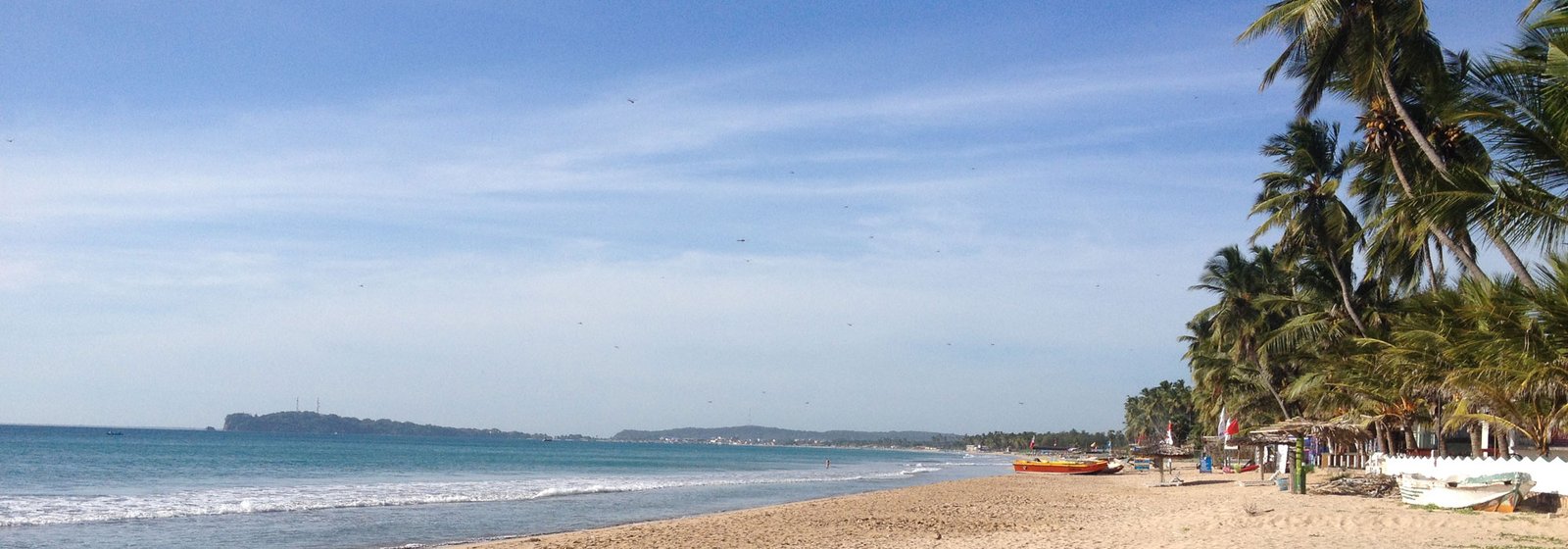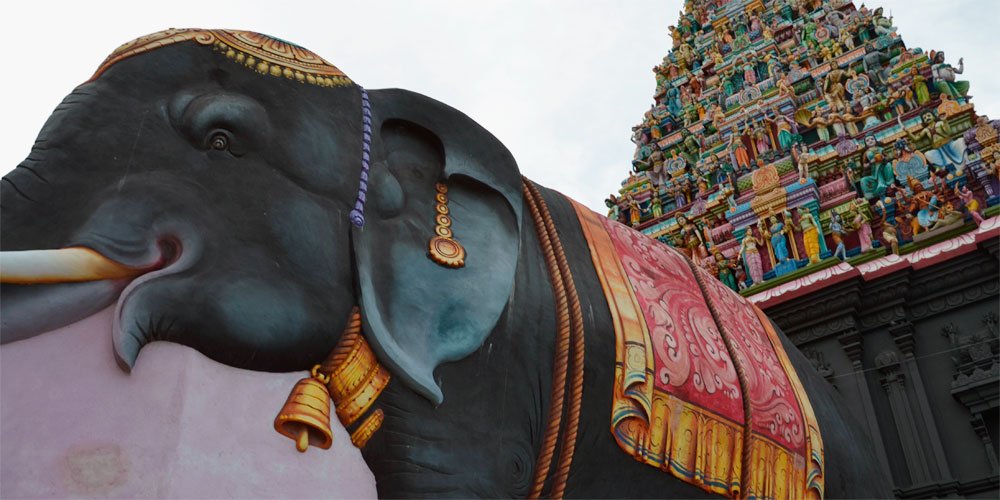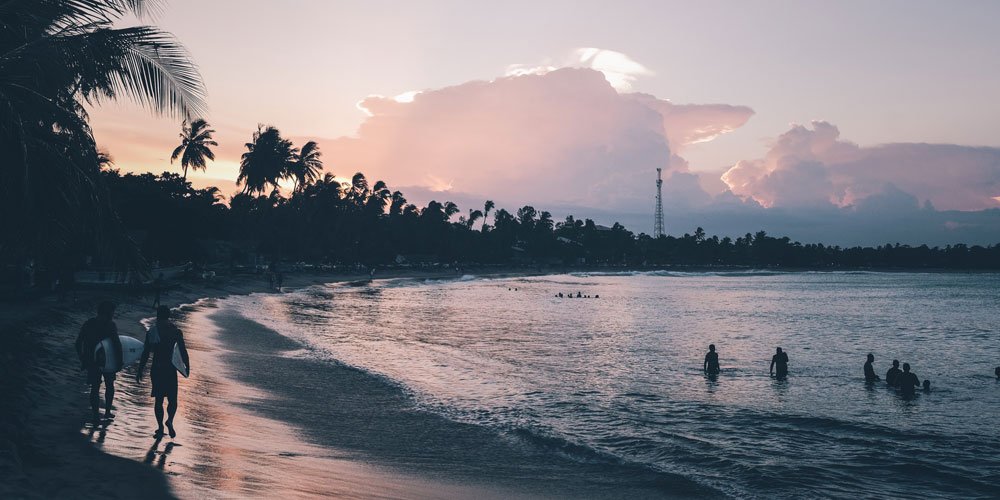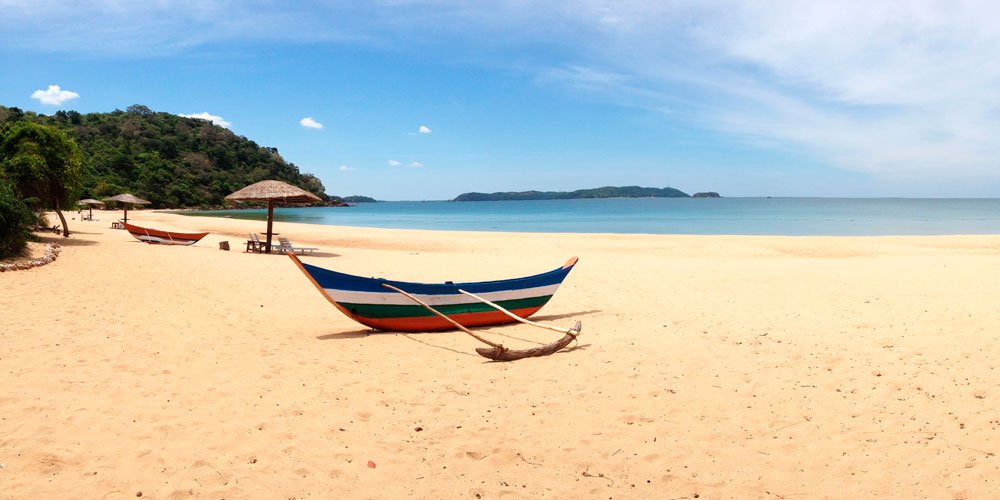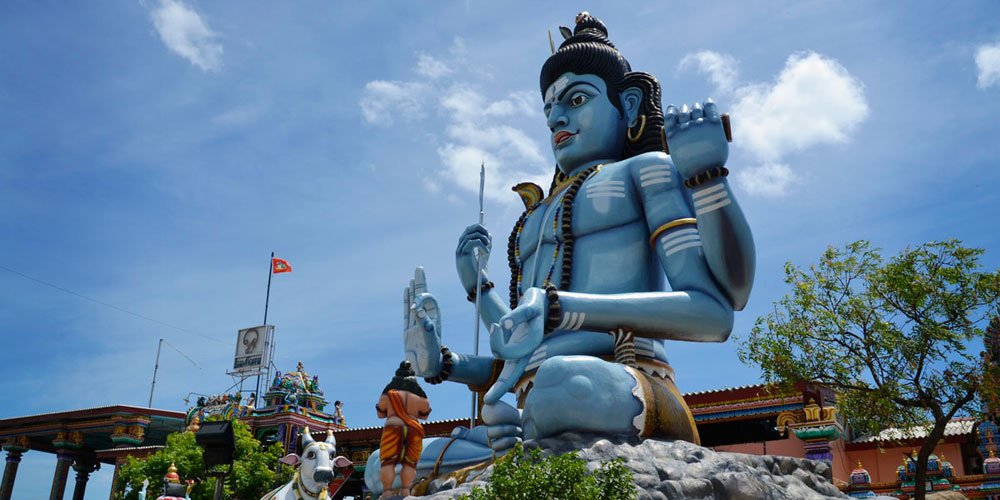For the traveller, the north and east coast offers a fascinating opportunity to explore a region emerging from over twenty years of civil war. A mirror image of its south and west – the far north and eastern coast remains largely untouched and tourist-free.
The north of Sri Lanka is a world apart from the rest of the country. The region was settled and invaded by Tamil migrants from southern India and has retained a unique character and culture, one which owes as much to Hindu India as to Buddhist Sri Lanka. A thirty-year-old war engulfed the area, where LTTE terrorists and the Sri Lankan Army were engulfed in fighting until the war ended in 2009. The region is now gradually emerging from its long years of isolation and is in the process of rebuilding towns and villages, de-mining fields and restoring roads.
Known for its golden beaches and the natural harbours, the Eastern Province is a little more developed, but a coastline that retains a more local feel – there’s near-zero package tourism here. The east remains a land of fishing villages, sparsely populated and largely undeveloped. It’s a culturally fascinating combination of Muslim communities, Hindu temples, colonial forts, and a coastline of killer surf, hidden bays and white sand beaches.
Don't Miss
- Arugam Bay’s great sand and surf and chilled-out atmosphere
- The vibrant town of Trincomalee
- Snorkelling in the tropical waters around Pigeon Island
- The colonial period churches in Jaffna town
- The roaming wild horses on Delft island
Sights of the far north & eastern coast
Highlights along the north & eastern coast
ARUGAM BAY
Arugam Bay is home to a famed point break that many regards as the best surf spot in Sri Lanka. It’s a tiny place, with a population of a few hundred, and everything is dotted along a single road that parallels the coast.
If you’re not a surfer, there are plenty of other draws: local beaches, lagoons, historic temples, beachfront guesthouses, oceanside restaurants, and a mellow kind of vibe that’s totally removed from the West coast beach resorts. Arugam Bay also makes a great base for several adventures in the nearby Kumana National Park. During the low season (November to April) things get very quiet and some places shut up shop altogether, but it can also be a beautiful time to visit, with few tourists.
PASIKUDA
Pasikuda beach is a popular tourist destination not only among foreigners but also among locals. The white sands, calm water, and sheer beauty remain unrivaled. Pasikuda pronounced as ‘Paasik kudah’ is known to have one of the world’s longest shallow coastlines. Since the water current is relatively weak you can walk around 250 meters out into the sea.


JAFFNA
Remote and war-torn Jaffna is the largest town in northern Sri Lanka and the undisputed cultural capital of the Sri Lankan Tamils, who have controlled the area since the thirteenth century. The town was the focal point of many of the early civil war’s fiercest battles, although having remained under government control since 1995 it at least avoided being caught up in the devastating fighting which enveloped the rest of northern Sri Lanka during 2008–09.
Largely inaccessible for over two decades, Jaffna is now once again freely open to visitors and offers an opportunity to explore a region emerging from over twenty years of isolation and civil war. The town presents an intriguing mixture of Tamil and European influences, with colourful temples sitting next to huge churches, and streets of a beguiling, faded colonial charm dotted with old Dutch and British residences.
Foremost of the attractions is the fascinating town of Jaffna, with its absorbing mixture of colonial charm and vibrant Tamil culture, while the Jaffna Peninsula and surrounding islands offer a string of remote temples, Hindu and Buddhist alike, beaches, and more off-beat attractions.
Nallur Kandaswamy Temple
One of the most impressive religious buildings in Jaffna and one of the most significant Hindu temple complexes in the country dedicated to God Murugan.
Nagadeepa Purana Raja Maha Viharaya
The temple situated on the island of Nagadeepa, 30km from Jaffna on road and another 15 minutes in a ferry attracts thousands of pilgrims throughout the year despite its extreme location. The temple was a flourishing pilgrim’s site until it was repeatedly plundered by the provincial Tamil kings and Portuguese during the 17th century. The temple was forgotten with time until it was unearthed and reconstructed in 1941 and the end of a thirty years old war had seen a revival of pilgrimage to the site.
Kadurugoda Temple
Situated in Hunugama or Chunnakkam in Jaffna Peninsula, the Kadurugoda Temple is believed to be a part of an ancient large Buddhist Monastery and is held by some to be a site graced by Lord Buddha on his visit to Sri Lanka.
Shree Nagapooshani Amman Hindu Temple
Situated in the isle of Nagadeepa just 30km from the Jaffna peninsula, Shree Nagapooshani Amman Hindu Temple is wrapped in thousand years of myth and legend. Believed to have been established by Lord Indra himself the temple is believed to have been built by a Chola merchant traveling from India to Sri Lanka, however, was destroyed and rebuilt in the 18th century.
The miracle springs of Keerimalai
Believed to hold the magical powers to cure various physical ailments including a disagreeable face the freshwater springs of Keerimalai lies next to the soaring Indian ocean. A pool built surrounding the springs is a sought-after bathing place believed to cure many physical ailments including disfigured faces.
Bottomless well of Nilavarai
According to legend, Seetha, wife of Rama, while on the return journey to India was overcome with thirst, and the Hero King Rama gallantly shot an arrow onto the earth creating the Bottomless well of Nilavarai. On the more factual shade, the well provides fresh water to the area around it and is a source of water for domestic and irrigational purposes. Two attempts by various scientific groups had failed to identify the bottom of this well or its’ water source while some believe it to be connected to the freshwater ponds in Ayiyakachchi and Keerimalei through an underground river.
Casuarina Beach
Named for the abundance of casuarina trees and considered to be one of the best beaches in the Jaffna peninsula, the powder-soft sand, the shallow waters up to almost a mile towards the sea, and the lack of strong currents and waves make it one the ideal bathing spots in the area.
Jaffna Fort
Constructed in 1618 by the Portuguese and later taken over by the Dutch and the British the Jaffna fort continued to be a British garrison until 1948.
With the onset of the Sri Lankan Civil War, it came under siege on several occasions and was the scene of pitched battles. From 1986 to 1995 it was under the control of the LTTE and was recaptured by the Sri Lanka Army in 1995 after a 50-day siege. Today the Fort is under an intense Archaeological and structural revamp with the assistance of the Dutch government.
Fort Hammenhiel
Standing on a rock at the entrance to Jaffna lagoon and surrounded on all sides by the sea; Hammenhiel stood on the north, guarding the passage by water to the Key Fort in Jaffna. Built initially by the Portuguese in the seventeenth century on a small island between the island of Kayts and Karaitivu of Jaffna Peninsula, Fort Hammenhiel was later captured, rebuilt, and renamed by the Dutch in memory of a ‘heel of the ham’.
In recent history, it served as a correction facility for naval personnel but had been refurbished into a resort and restaurant where old Dutch prison cells had been converted into rooms to provide a prison cell experience.



TRINCOMALEE
Trincomalee is world famous for its natural deep-water harbour. The city is built on a peninsula, which divides the inner and outer harbours. The city is home to the famous ancient Koneswaram temple and has been a seaport that has played a major role in maritime and international trading. The Bay of Trincomalee harbour is renowned for its large size and security; unlike every other in the Indian Sea, it is accessible to all types of craft in all weather.
Trincomalee has some of the most picturesque and scenic beaches found in Sri Lanka, relatively unspoilt and clean. The area is famous for bathing and swimming, owing to the shallowness of the sea, and also for surfing, scuba diving, fishing and whale watching. The city also has the largest Dutch fort in Sri Lanka. It is home to major Sri Lankan naval bases and a Sri Lankan Air Force base.
Koneswaram Temple
Surrounded by jaw-dropping scenery on all sides, the colourful Koneswaram temple sits high above the bay. The site is a religious pilgrim centre, dedicated to the Hindu god Shiva. At one time the complex was as large and grand as any in India or Sri Lanka. The grandeur was mostly lost in the 17th century at the hands of the colonial Portuguese, who razed structures, dumped some into the sea, destroyed objects, and smashed ornamentation.
Pigeon Island
Pigeon Island National Park is located north of Trincomalee out of Nilaveli on the most beautiful sandy beaches in Sri Lanka. The national park contains some of the best remaining coral reefs of Sri Lanka.






